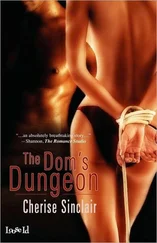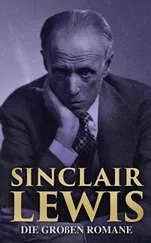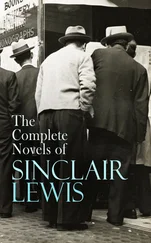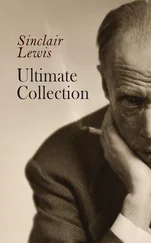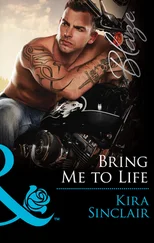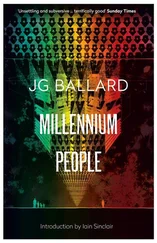The theft of the plaque had caused a dark stain to form in the varnished pine; the now untitled volume. A distinct shape was caught within a rectangle of screw-holes: the outline of the Isle of Sheppey, every creek and headland. (Sinclair had photographed this too. And set the Ordnance Survey 178 version, successfully, inside it.) King Cole, whose fate was obscure, whose legend was nailed to this place, was free once more. His dream had published a tobacco-spit path, and our walk would attempt to complete (retrace) its circuit.
I had to break out of this trap. Turn away from the sick magnetism of the De Shurland tomb and the knight’s spear, which ran along the edge of it: an object I coveted above all others. This was the weapon I had never yet forged to my own satisfaction. Its soiled, putty-coloured mantle had been rubbed away, enamel from a dead molar, revealing a stick of black tar: iron within stone, a liquid vein. With the wounded lance, Robert had worried the margins of the sea, asserting his rights of salvage; stamping (on Grey Dolphin) through all the treacherous shallows. I saw the heated metal hissing in cold winter tides, turning the feudal ocean to a lake of fire. The sleeping knight had turned away from this ritual implement, which was also his spine, his staff of memory: he twisted in agonized slumber. But the challenge was explicit: to drag the spear from the lid of the tomb and bring down the shamed building. Reduce it to rubble. I was not ready. Not this time. I censored the impulse, and moved across the body of the church to admire its lesser curiosities.
The parson trusted us with the key to the side-door, while he stepped through the garden to the vicarage for a late breakfast. This was a symbol of power, too large for any pocket. Sinclair held it in his hand like a policeman’s torch. The parson had pointedly switched off all the church lights, except the one above the table of souvenir mugs and dishcloths, the postcards and collecting boxes. We drifted without shadows, ghosts among the sepulchres. Craftsmen had laboured long to hold the Minster notables within their deep plaster trunks, confounding them in an excess of heraldic detail. We became the nightmare inflicted on the noble dead. We were the future horror tormenting their slumber. The revenging peasants, the pilgrimage of lunatics.
The effigy of the supposed Duke of Clarence has been devoured beyond recognition by the spirochaetes of time. He is chiselled out of rancid wax. He exploited the privilege of blood to nominate his method of execution. And was drowned in a butt of Malmsey wine. ‘So far so good,’he thought, sampling the first sweet quarts. But 126 gallons is a long pull for the thirstiest toper. He surely came to regret the sugar-retching sickliness of his chosen vintage, and longed for the dry bite of a Canary sack.
Now Clarence floats over a stone tank that contains all his brown body liquor: a subtle blend of blood and wine in constant and heretical transubstantiation. High-collared, sour in breath, he waits to be released by some brave spirit who summons up the courage to tap the flood, and drink.
Hidden in an eclipsed alcove, beyond Clarence, is another knight; excommunicated among the reserve collection of loose and nameless rubble: broken stone tusks, tiles, calcified toads. This sleeper frames, between praying hands, a carved scarab, a stone mirror, on which it is just possible to identify a shrunken version of himself: a miniature ( shabti ) to share his experience of decay. I lean over, letting my breath moisten the cold skin. I strain to interpret the blunted detail. I notice that the homuncular double is also holding, between his praying hands, a scarab; on which — I have to accept — there is another knight. And another knight. And another. And another.
The trap has been baited, and sprung. The watcher is telescoped backwards through an infinite progression of fears. Oval cards click in a reductive tarot. My features lose all their hard-earned flaws, their history. I vanish into the thing I am seeing. This is one of those places where it would be all too easy to lose your balance, to topple, to give entry to the cold damp air: to halt and never move again, while exhausted flesh finds repose in a condition of alabaster. To cease.
Sinclair has the key in the door. We have indulged our tame speculations. We are rested and dried. We are almost comfortable. It’s time to step back out into the storm. To find out which one of us is not coming back.
VI
Devouring a set of cold-meat pasties (folded marble, stuffed with varicose bandages), we process down the spine of the island towards Eastchurch. A plague penance. Cars lurch out of blind bends to scrape our knees, or drown us in their wash. I have to make a loud noise to avoid being flung into the crunching mechanism of a refuse truck by a gang of white-eyed zombies: a dismissed mercenary troop roaming the highways in flapping layers of rope-tied fertilizer sacks. The road is a slick river for panic-crazy millennialists, racing to escape from whatever lay ahead of us. Only the black siren-vans move in our direction; hooting from behind, as they hurtle towards a secret prison complex, dug out of a distant hill. Domes and bunkers. Cruel shapes suggesting freelance experiments in social and chemical control. (In happier days, Joe Orton holidayed here. Took a six-month body-building course at our expense. For collaging library books.)
My Achilles tendons have gone (both of them) and my knees are beinning to lock. I’m walking like a bad (taste) Douglas Bader impression. Sinclair, a man possessed, is flinging himself into the eye of the hurricane. I know the bastard is enjoying this. Pellets of hail are soloing like Max Roach on his bald crown, a rattle of drumsticks. The landscape, within this storm bell, is transformed by the strangest underwater light. I have to hang on to Sinclair’s faint blue-grey outline, as he hauls me, yard by painful yard, into the parasitical prison-hamlet of Eastchurch.
Only one window, down the dreary length of the village street, is lit: a wacky lesbian mini-cab outfit, obviously targeted at carrying wives and girl friends out to the prison. An uneasy ride made tolerable by freedom from (male) sexual harassment. The office is dominated by an alsatian-draped sofa and a cage of parrots, most of whom are wearing lipstick. I press my face longingly against the glass; but nothing halts the solitary stalker, the headcase. If anything, he speeds up. He wants to shake free from the taint of this nest of collaborators, to get back to the shoreline, the fretting sea. He barely pauses to register the shrine (school of Michael Sandle) to the pioneer aviators. Dynastic porcine heads strapped into fetishist flying helmets. Old war is new porn. Cloudy white stone. Primitive Magdalenian aeroplanes rising in relief from the columns of dead names. Aeroplanes as imagined by wrecked, rape-surfeited Danish raiders. Zero visibility over the marshlands. Threat vapours. Fear-induced thunder. I know Sinclair can’t resist sampling the monument; but rapidly in a portfolio of off-beat snapshots. He logs the anomalies, to work (somewhere) into the final mosaic. The spiralling connections. Not now . His head jerks, a clockwork owl. Yes yes yes. Got it. Let’s go .
We double through a predatory scatter of breakfast bars, clocked by the android eyes of warders, gobstruck with their dripping meat forks halfway towards their faces. They can’t believe we’ve avoided captivity. Any society that allows the likes of us to roam unmolested down the public highway is sick. Terminal. Finished. Order another breakfast. Nobody on the island eats any other meal. A twenty-four-hour morning. A perpetual hangman’s dawn.
Sinclair’s map is useless. It has regressed to pulp in his sodden pockets. Damp blots have rearranged all the salient features. He abandons its untrustworthy guidance and leads us, by will alone, to Shurland Manor. Or what remains of it.
Читать дальше




